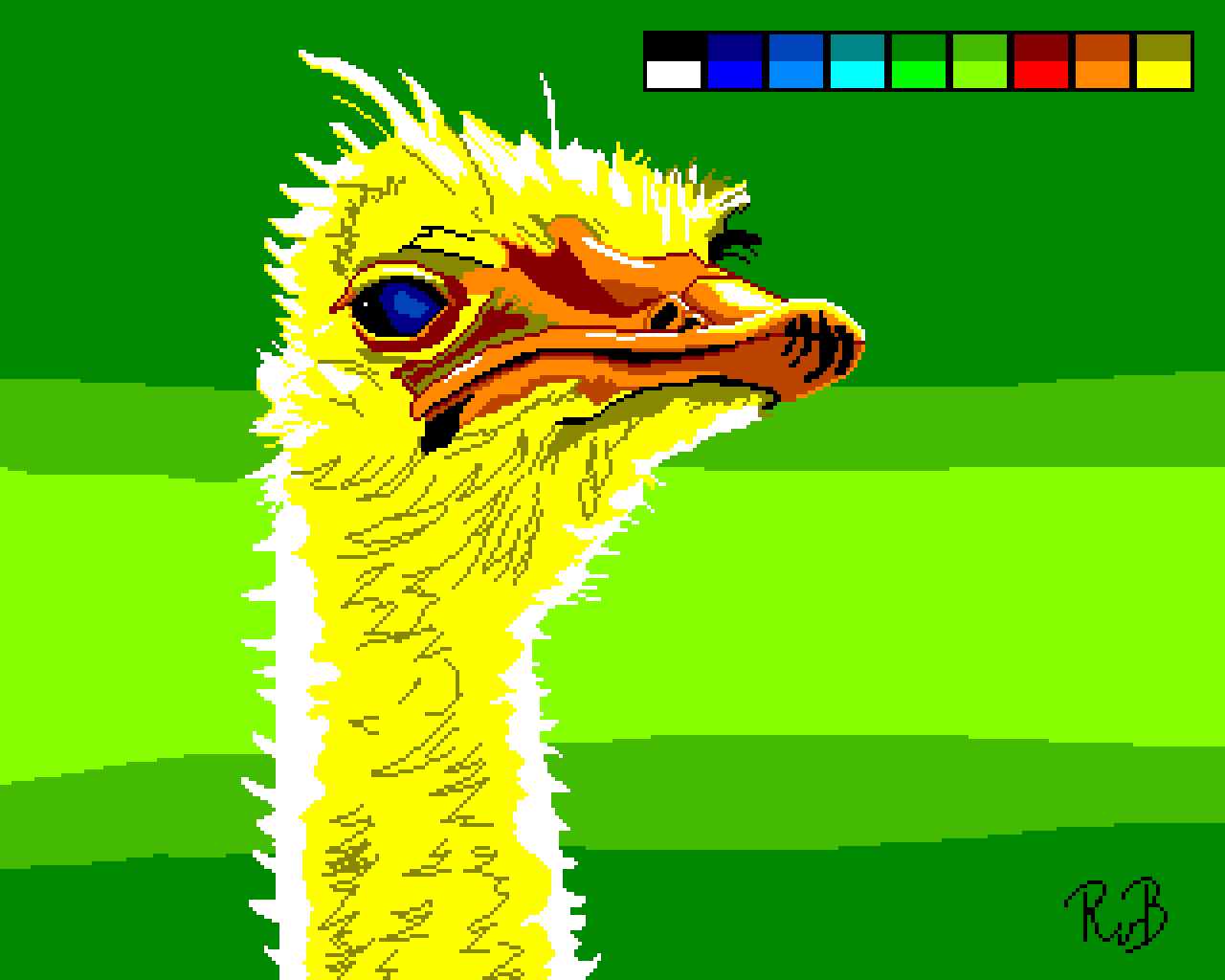-
I waited until I was exited enough to continue my Amsterdam cityscape (2 days). I suppose this happens when doing projects that aren’t commissioned. Still only 2 whole and 2 half house to go for the layer with the merchant houses. It’s taking a lot longer than I expected.
👾
-
Drawing from a reference on Flickr in Game Boy pixel art (160 by 144 pixels, 4 colors), with process animated GIF. Drawn in ibis Paint X, pixeled in Pixaki.
👾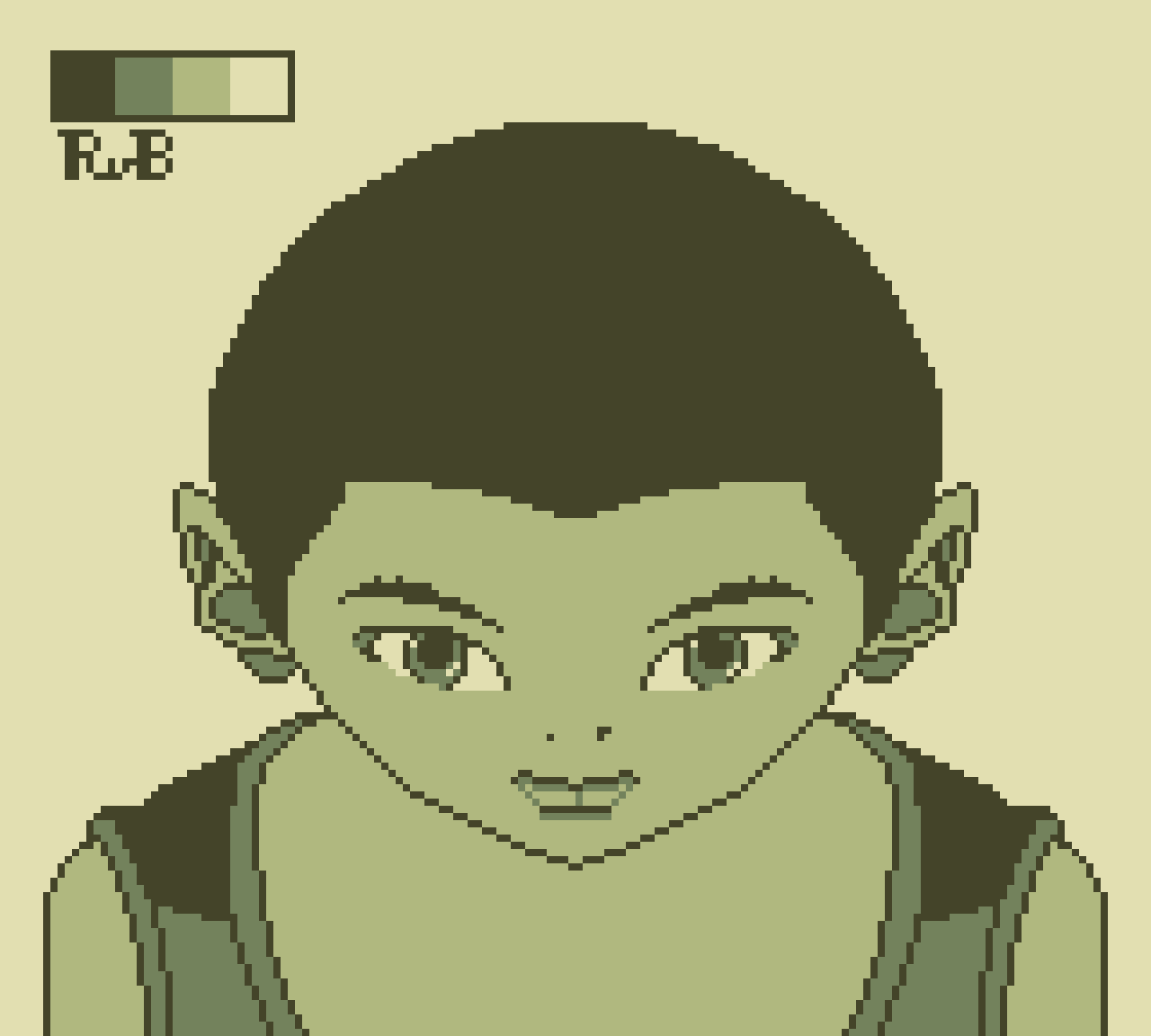
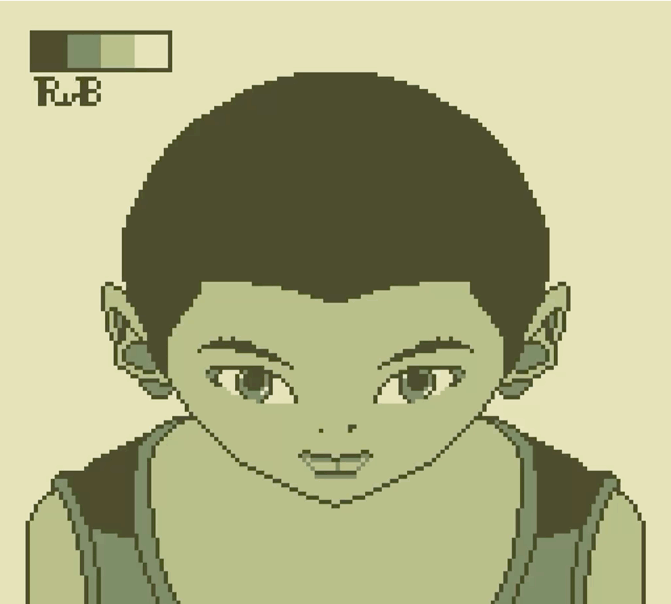
-
Pixel art for the Game Boy.
👾
-
This could be cover art for a Viking war game.
👾
-
I notice within myself a slight reluctance to continue this project, which reluctance is quite normal, I believe. As long as the desire to see this through is greater than doing much of the same thing day after day, I think I’ll manage the mental resistance to continue.
👾
-
Another day, an additional house. Paying attention to details, but especially adjusting what’s in the reference to what’s already drawn, takes a huge amount of time. I went with another color of brick to add variety. It’s all imagined, so I get to pick and choose.
👾
-
You’d think we’d developed something against male pattern baldness by the 24th century
👾🧪
-
Another house added, plus the previous house edited. Creation is mostly revising what you previously made. Anyway, it’s giving me vibes of a Dutch city in summer. Only six whole and two half houses to paint before I get to invent the background.
👾
-
Game Boy Advance pixel art with Game Boy color palette
🐿️👾
-
There are so many details to even a single house with a step gable to copy from an illustration, that it took me almost 2 hours to make it. Next, I’ll try a neck gable, then a clock gable from reference. There are other architecture styles I noticed collecting photos. It’s a slow process overall…
👾
-
It doesn’t seem much, yet it represents hours of studying Midieval merchants' townhouses for their generic building plans and reasons for their dimensions. For actually understanding their historical relevance I’d have study much more, in the order of months.
👾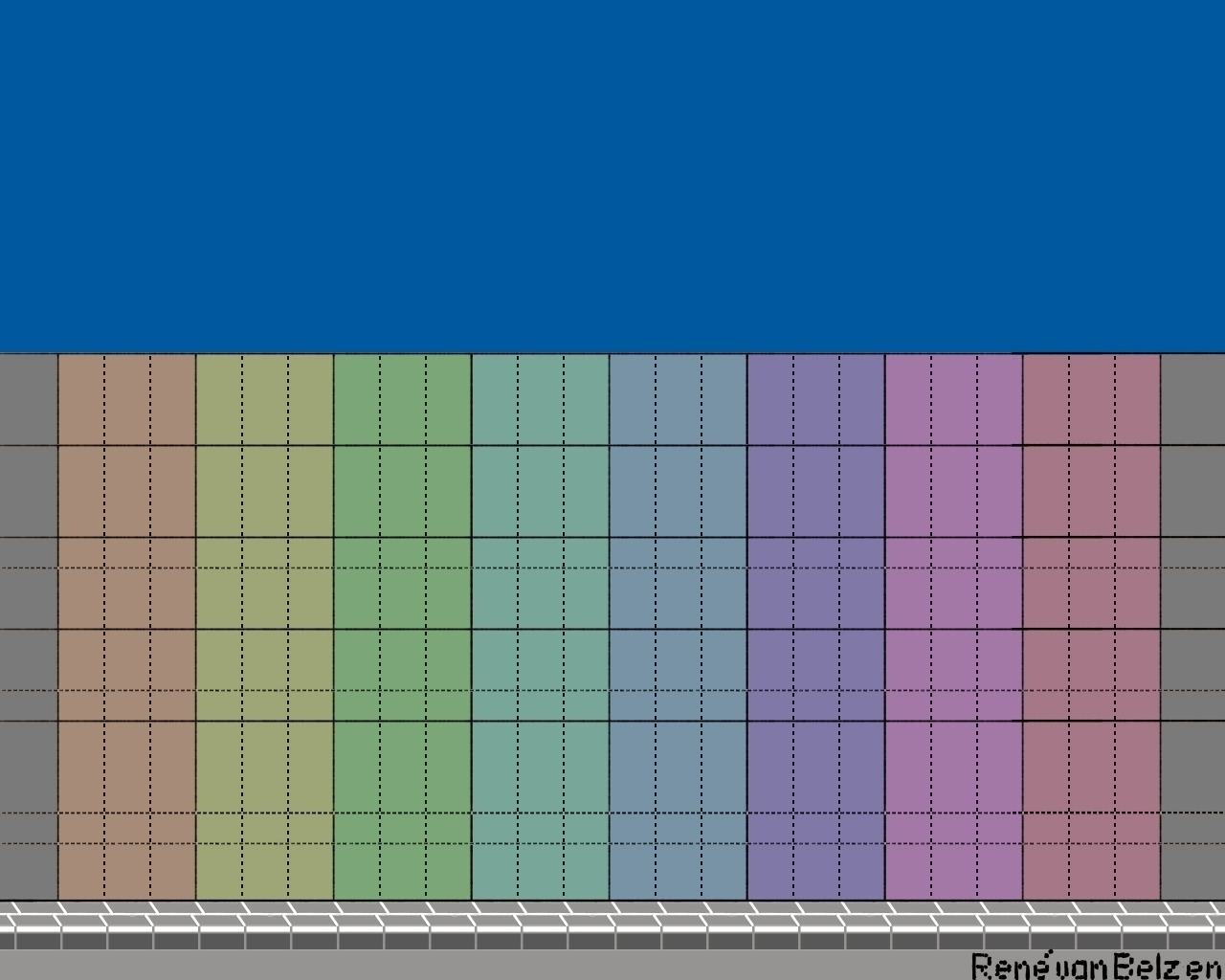
-
I was thinking “cityscape”, so I got some references of Amsterdam cityscapes, basically houses alongside canals. It turned out drawing a single house was already a big thing. I had to leave out so much details. I also forgot to add a human analog for scale, though the door is perhaps good enough.
👾
-
What was I thinking?
🎨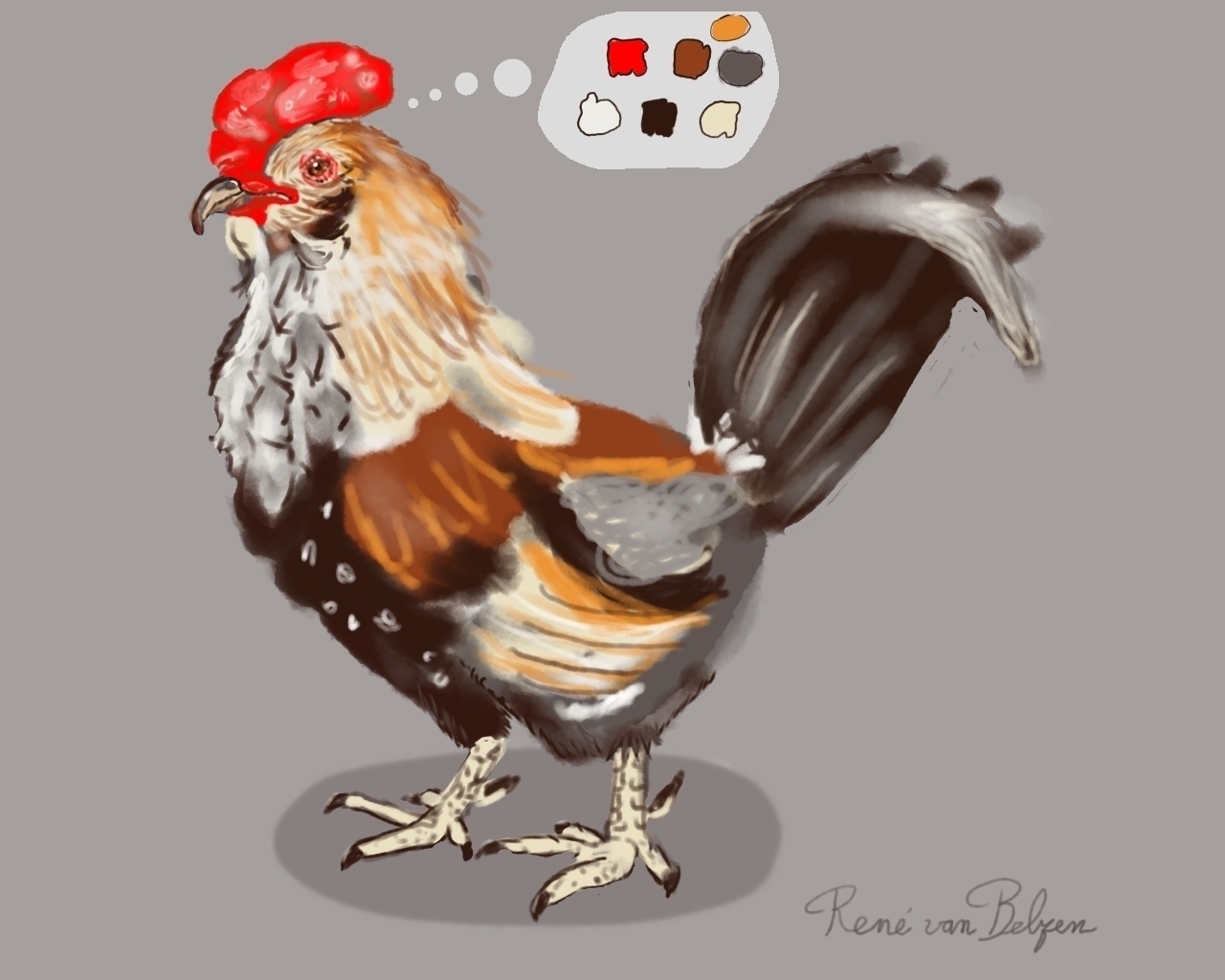
-
Games can (and should) have great artwork, but for gameplay it does nothing; players soon look past it if the game is any good. Something I learned from A Theory of Fun by Raph Koster.
👾
-
This is one of those random scribbles and then make something out of it. Maybe I’m reaching the bottom of the barrel here.
👾
-
Sometimes what I draw doesn’t make sense to me. Then after some time it begins to make sense, somewhat. My fantasy is weird, non-productive. I like the colors, though.
👾🧸
-
It seems lots of Youtube content creators end their careers as a Youtuber, because they’re spread too thin, creating videos has become a side-hussle and the main job seems to be holding balls in the air. If any of those “balls” drop, your career is over.
What did you expect if Google is your “boss”?
-
This pixel art was crushed from 81.920 bytes into 3.473 bytes. It’s an Amiga LowRes 320 by 256 pixels drawing with 3 bit planes (8 colors), representing a rooster.
👾🐓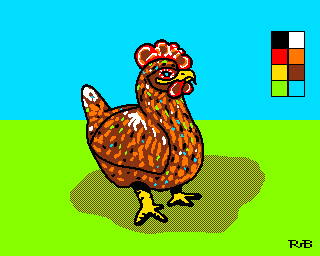
-
For some reason, I can make art on the RPi using an old Amiga LowRes format. I suppose it’s the limitations that stimulate my creativity, while with the full-blown iPad I’m still struggling because of the many options. Meaning, I have to think much harder before drawing on the RPi.
👾
-
I suppose I still need to practice (a lot more) to reach a pro level of art. Is it a duck or an ostrich, or something else altogether? 🤷 If it’s a duck, it’s fugly!
👾